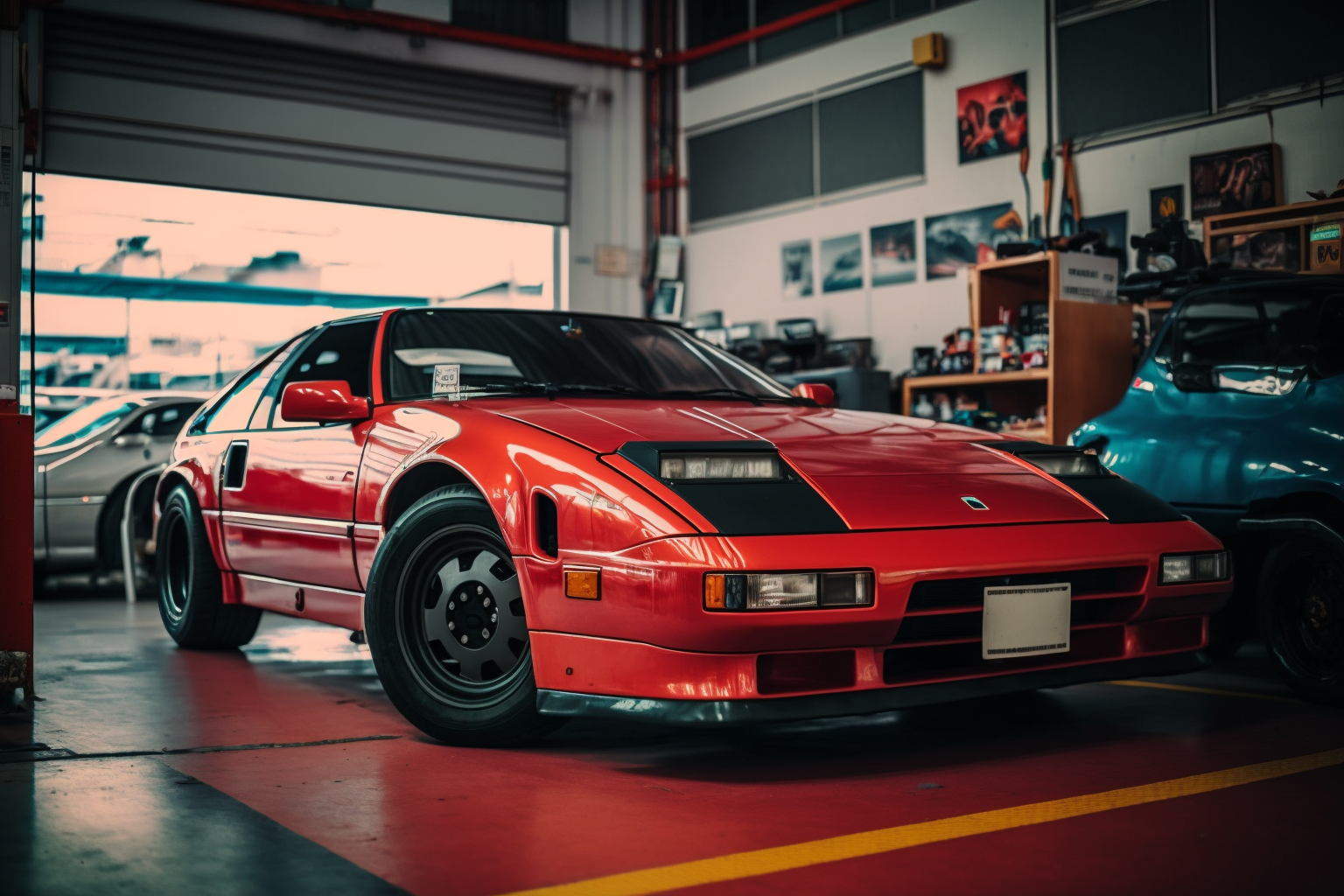Karkrub Review
Specs of the Car:
The 1993 Nissan 300ZX 3.0 was powered by a 3.0-liter V6 engine. Depending on the variant, it either had a naturally aspirated version producing around 222 hp or a twin-turbocharged version offering up to 300 hp. The vehicle featured rear-wheel drive, and buyers had a choice between a 5-speed manual or a 4-speed automatic transmission. Notably, the car boasted a 0-60 mph time of roughly 5.5 seconds for the twin-turbo variant. Its design aesthetics were a showcase of the 1990s Japanese sports car era, featuring sleek curves, pop-up headlights, and a low-slung profile.
History of the Model:
The Nissan 300ZX, part of Nissan’s Z-car series, was introduced in 1983 as a successor to the 280ZX. The 1993 model was a part of the Z32 generation, which commenced in 1989 and marked a significant departure from the previous Z31 series. The Z32 was more modern in terms of technology, design, and performance, aiming to compete with other sports cars of its era.
Development of the Model:
When developing the Z32 model, Nissan sought to create a car that was not just faster but also more advanced in terms of engineering and aerodynamics. The result was a more refined, yet aggressive design. Significant R&D went into perfecting the twin-turbocharged variant, ensuring optimal performance while minimizing turbo lag. Nissan also employed the Super-HICAS four-wheel steering system to improve handling, making the car agile on twisty roads.
Journalist Reviews at the Time of Release:
Upon its release, the 1993 Nissan 300ZX received widespread acclaim from auto journalists. They praised its blend of performance, comfort, and advanced technology, especially for its price point. The twin-turbo variant was often the star of reviews, celebrated for its rapid acceleration and capable handling dynamics. However, some critiques pointed towards its increasing weight compared to earlier Z-cars and a somewhat complicated engine layout that could make routine maintenance more challenging. The car was often compared favorably to its rivals, establishing its place among the top Japanese sports cars of the 1990s.
Types of Modifications Typically Done:
Over the years, the Nissan 300ZX has become a favorite among car enthusiasts, leading to a myriad of modifications. Common modifications include:
- Engine Upgrades: Many owners opt for aftermarket turbochargers, intercoolers, and exhaust systems to boost power output. Engine management systems are also updated to fine-tune performance.
- Suspension and Brakes: To enhance the car’s handling characteristics, aftermarket coilovers, sway bars, and strut braces are popular choices. Brake upgrades, with larger rotors and performance pads, provide improved stopping power.
- Aesthetics: Given the car’s iconic pop-up headlights, some owners retain them for the nostalgic value, while others opt for aftermarket “sleepy eye” modifications or LED conversions. Body kits, spoilers, and custom paint jobs further individualize the car’s appearance.
- Wheels and Tires: Wider and larger diameter wheels paired with performance tires are common to provide a more aggressive stance and better grip.
The 1993 Nissan 300ZX remains a beloved model in the automotive community, a testament to its engineering, design, and the driving pleasure it offers. Its blend of performance and aesthetics keeps it relevant, even three decades later.
Karkrub Score
Design: 9/10
The 1993 Nissan 300ZX boasted a striking design, encapsulating the essence of the ’90s Japanese sports car era. Sleek curves, iconic pop-up headlights, and a low-slung profile set it apart in a crowded marketplace. The aerodynamic silhouette not only made it stand out visually but also contributed to its performance.
Power: 8.5/10
With its 3.0-liter V6, the 300ZX had a robust power output. The naturally aspirated version produced around 222 hp, while the twin-turbocharged variant reached up to 300 hp. While it was powerful for its era, other competitors had started to inch ahead in the horsepower race.
Fun: 9/10
Driving the 300ZX was an exhilarating experience, especially the twin-turbo variant. Its agility on twisty roads, coupled with punchy acceleration, made it a favorite among enthusiasts. The Super-HICAS four-wheel steering system further enhanced its fun factor, making cornering a delight.
Comfort: 7.5/10
While designed as a sports car, the 300ZX didn’t entirely neglect comfort. The interior was relatively spacious for its class, and the seats were designed to provide support during spirited drives. However, some found the cabin to be a bit cramped, especially for taller individuals, and road noise was noticeable at higher speeds.
Reliability: 7/10
The 300ZX was built with Japanese precision, known for its durability. However, the twin-turbo variant, with its more intricate engine layout, often required meticulous maintenance. When well cared for, it could be reliable, but any negligence could lead to costly repairs.
Safety: 7/10
For its era, the 300ZX was equipped with basic safety features, such as front airbags and anti-lock brakes. However, it didn’t have many of the advanced safety features that later became standard in sports cars. Its structural design was reasonably solid, offering protection in the event of a collision.
Value: 8.5/10
The 300ZX offered a lot of car for its price point. Combining performance, design, and advanced (for its time) technology, it presented excellent value for money. Today, its status as a classic Japanese sports car has only added to its value, with well-maintained examples fetching a premium.
Overall Score: 8.1/10
In conclusion, the 1993 Nissan 300ZX 3.0 remains a significant model in automotive history. While it excels in design, power, and fun factor, certain aspects, like its complex maintenance needs, might deter some. Regardless, its combination of performance and aesthetics ensures its lasting appeal in the car community.

Leave a Reply